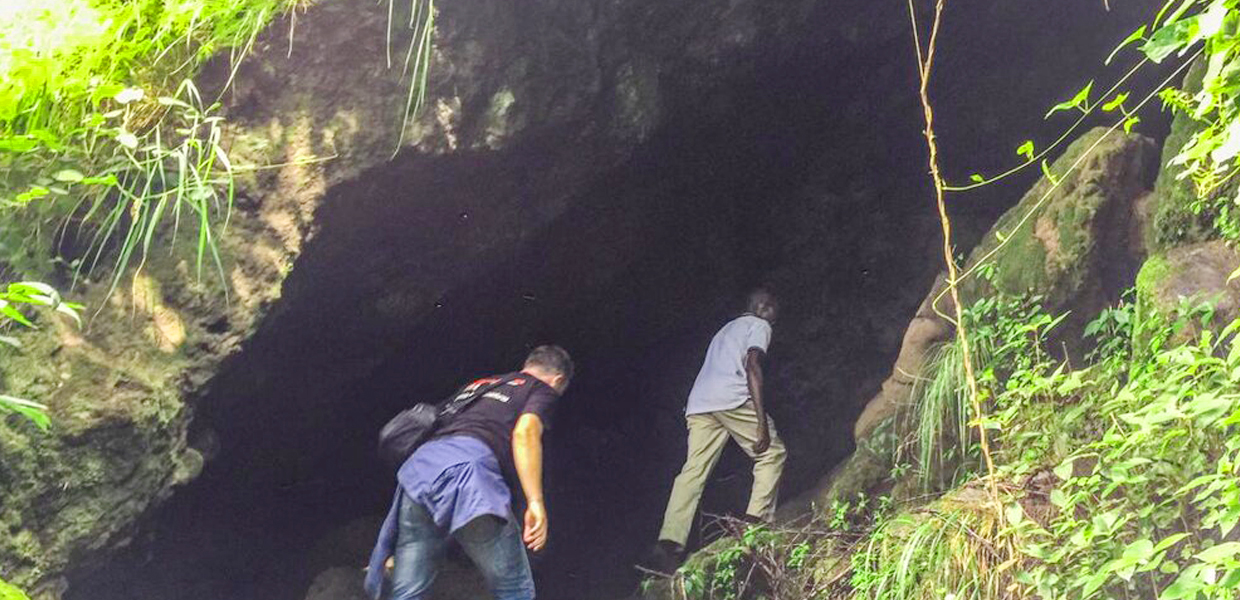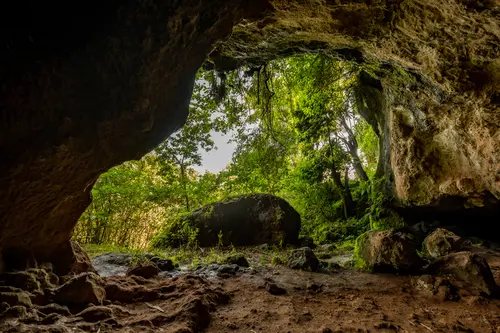Exploring Caves of Mount Elgon National Park
Secrets Carved in Stone
On the rugged slopes of Mount Elgon, Africa’s oldest extinct volcano that straddles the border of Uganda and Kenya, lies a world that is often overlooked but no less fascinating than the mountain’s peaks or waterfalls. This is the world of caves—vast chambers carved by ancient geological forces and shaped over millennia by wind, water, and volcanic activity. For travelers who venture beyond the trails and forests, the caves of Mount Elgon National Park reveal stories not only of nature’s artistry but also of wildlife survival, human history, and cultural symbolism.
Stepping into these caverns is like entering a hidden dimension. The outside world, filled with birdsong and rushing rivers, fades into silence broken only by the sound of dripping water or the flutter of bats. Walls glisten with mineral deposits, ceilings stretch into shadows, and the air carries a cool dampness that feels timeless. For centuries, these caves have been places of refuge, sources of sustenance, and even sacred spaces. Today, they serve as key highlights for explorers, historians, and wildlife enthusiasts who are drawn to Mount Elgon not only for its natural grandeur but also for its subterranean mysteries.
The Geological Birth of Mount Elgon’s Caves
Understanding the caves of Mount Elgon begins with the mountain itself. Mount Elgon is believed to be one of the oldest volcanoes on the African continent, estimated at more than 24 million years old. Over time, its once towering height—likely greater than Kilimanjaro in its prime—was worn down by erosion, leaving behind its massive caldera and a network of valleys, ridges, and caverns.
The caves formed through a combination of volcanic activity and erosion. Molten lava flows, hardened layers of ash, and the constant force of rivers cutting through the slopes contributed to the hollowing out of underground chambers. Some caves are natural lava tubes created during eruptions, while others were carved by streams finding paths through softer rock layers.
This geological history is still written in the walls of the caves, where mineral deposits shimmer faintly and evidence of erosion can be traced in smooth passages and worn chambers. For those who study geology, Mount Elgon’s caves are natural laboratories offering insights into the volcanic and erosional processes that shaped East Africa’s landscape.
The Famous Caves of Mount Elgon
Among the many caves scattered across the slopes, certain names stand out, drawing visitors with their size, history, and wildlife.
The Kitum Cave, perhaps the most famous, extends nearly 200 meters into the mountain. Though located on the Kenyan side of Mount Elgon, its fame resonates across the region. Kitum is renowned not only for its geological features but also for its unusual visitors: elephants that venture deep inside to mine the walls for salt. This rare behavior, where elephants scrape rock with their tusks to obtain essential minerals, has fascinated scientists and travelers for decades.
On the Ugandan side, caves such as Kapkwai Cave, Chepnyali Cave, and Mackingeny Cave offer equally compelling experiences. These caverns, though less publicized internationally, are deeply significant both ecologically and culturally. Some have sheltered people during periods of conflict, while others continue to serve as landmarks for local communities. Each cave tells a unique story that blends natural wonder with human interaction.
Wildlife in the Depths
The caves of Mount Elgon are not barren voids; they are alive with wildlife adapted to the unusual environment. The most iconic are the cave elephants, which have been observed traveling into Kitum and other caverns in search of minerals. This behavior is not only remarkable but also ecologically significant, as it highlights how animals adapt to the resources available in their environment.
Bats are another defining presence. Colonies of fruit bats and insectivorous bats roost in the dark recesses, their fluttering wings creating an eerie symphony as they emerge at dusk. These bats play critical ecological roles, from pollinating plants to controlling insect populations.
Other species, such as hyraxes, bushbucks, and even leopards, are occasionally found near caves, using them for shelter or hunting grounds. Smaller creatures such as spiders, insects, and amphibians thrive in the moist, shaded conditions, forming unique micro-ecosystems that differ from the surrounding forest.
Visitors often find that observing wildlife behavior inside or near the caves provides a new dimension to understanding how species adapt to varied and often challenging environments.
Cultural Significance of the Caves
For the communities living around Mount Elgon, caves are not only natural wonders but also cultural landmarks woven into stories, traditions, and survival.
The Bagisu and Sabiny peoples, who occupy the Ugandan slopes, have long histories of interaction with these caves. Oral traditions recount how caves were used as places of refuge during times of tribal conflict, offering shelter when safety was most needed. Others were used for ceremonies, gatherings, or spiritual practices, believed to be spaces where ancestral spirits dwelled.
In some cases, caves provided practical resources. Salt deposits mined by elephants were also valuable to humans, who collected them for trade and consumption. Caves served as natural storage places, their cool interiors ideal for preserving food.
Even today, local guides often share stories about the caves, blending historical accounts with folklore. For travelers, listening to these narratives transforms a cave visit into a cultural immersion, where the stones echo not only geological time but also human memory.
Caves as Historical Refuges
Throughout history, caves have offered protection during times of conflict and upheaval. During pre-colonial struggles and later during colonial incursions, local communities found safety within Mount Elgon’s caves. The wide chambers provided shelter for families, livestock, and belongings, while their secluded locations made them difficult for enemies to penetrate.
Archaeological evidence suggests that some caves were inhabited for extended periods, with remains of pottery, tools, and hearths found within. These remnants stand as testimony to the resilience of mountain communities who relied on natural formations for survival.
Exploring these caves today allows visitors to connect not only with natural beauty but also with human resilience. They become living museums, where the whispers of past generations seem to linger in the air.
The Adventure of Cave Exploration
To step into one of Mount Elgon’s caves is to embark on an adventure into the unknown. Unlike hiking trails or open landscapes, caves invite curiosity and evoke mystery. Guided explorations typically begin with treks through forests or farmland, where anticipation builds as the dark entrance of a cave comes into view.
Inside, light quickly fades, and torches reveal vast chambers, narrow passageways, and mineral formations. The atmosphere is at once eerie and awe-inspiring, demanding both caution and wonder. The silence is profound, broken only by footsteps, dripping water, or the flutter of bats disturbed by movement.
For adventurers, the experience is unforgettable. Unlike mountain climbing or wildlife viewing, which unfold in open spaces, cave exploration offers intimacy and intensity, a journey inward rather than outward. It challenges perceptions of space and time, encouraging reflection as much as excitement.
The Science of Salt Mining Elephants
Among the most extraordinary spectacles of Mount Elgon’s caves is the behavior of elephants that mine salt. Known locally as “cave elephants,” these animals descend into the depths at night, guided by memory and instinct, to scrape mineral deposits from cave walls.
This practice, called geophagy, fulfills a critical nutritional need. The soils and rocks of the caves contain essential minerals, such as sodium, that are scarce in the elephants’ regular diet. By mining salt, the elephants maintain health, particularly in relation to digestion and bone strength.
Researchers have documented how elephants use their tusks to carve grooves into the walls, sometimes enlarging caves significantly over time. The marks left behind are visible records of generations of animals engaging in this behavior. Observing these interactions offers a rare glimpse into the adaptability of elephants and the interconnectedness of geology and wildlife.
The Role of Caves in Conservation and Tourism
The caves of Mount Elgon have increasingly become focal points for conservation and tourism. Their unique combination of geology, wildlife, and cultural heritage makes them valuable not only as natural attractions but also as symbols of ecological and cultural preservation.
Tourism revenue from cave exploration supports conservation initiatives, ensuring that both wildlife and landscapes are protected. At the same time, involving local communities as guides and caretakers ensures that benefits are shared, fostering a sense of ownership and stewardship.
For visitors, this creates a mutually enriching experience. Exploring caves with local guides provides not only safety and interpretation but also a direct connection to the cultural knowledge and traditions of the mountain’s communities.
Seasonal Considerations for Cave Exploration
The experience of exploring Mount Elgon’s caves is shaped by seasonal variations. During the dry seasons, from June to August and December to February, caves are more accessible, and trails leading to them are less muddy and easier to navigate. Visibility is clearer, and wildlife activity, particularly the movement of elephants, can often be observed more readily.
During the rainy seasons, from March to May and September to November, cave exploration becomes more challenging but also more dramatic. Increased rainfall enhances the water flow inside and around caves, making some passages slippery or partially flooded. Yet the lush landscapes surrounding the caves are at their most vibrant, offering breathtaking scenery along the approach routes.
Visitors planning to explore caves are often encouraged to consider these seasonal dynamics, balancing convenience with the dramatic beauty that comes with rain-fed abundance.
The Broader Experience: Caves within Mount Elgon’s Landscape
Though caves are striking features in their own right, they form part of a broader landscape that enhances their significance. Treks to caves often pass through dense forests alive with primates, bamboo stands swaying in the wind, and moorlands dotted with giant lobelias. Along the way, waterfalls cascade from cliffs, rivers cut deep gorges, and bird calls echo through the trees.
This integration of caves into the wider ecosystem means that exploring them is rarely a standalone activity. Instead, it becomes part of a layered experience that includes wildlife observation, cultural encounters, and appreciation of the mountain’s diverse habitats.
For travelers, this makes cave exploration one of the most immersive ways to experience Mount Elgon National Park. It is not only about entering darkness but also about seeing how darkness and light, surface and depth, geology and biology converge in harmony.
Stepping into Mount Elgon’s Hidden World
The caves of Mount Elgon National Park are far more than hollow chambers in stone. They are living archives of geological history, sanctuaries for wildlife, refuges of human resilience, and cultural landmarks filled with meaning. To explore them is to encounter the mountain’s most hidden secrets, to walk where elephants carve salt from walls, where bats weave through shadows, and where communities once sought shelter from storms and conflicts.
For modern travelers, stepping into these caves is both an adventure and an education. It is a reminder that landscapes are not defined only by their visible peaks and valleys but also by their hidden interiors, where stories of nature and humanity are preserved in silence and stone.
To truly immerse in this subterranean world, it is recommended to arrange guided explorations and broader safari experiences through WildHorn Africa, a trusted specialist in African adventures. With expert knowledge, cultural connections, and a commitment to creating meaningful journeys, WildHorn Africa ensures that the caves of Mount Elgon are not only explored but truly understood.





 WildHorn Africa – Authentic and unforgettable tours across Africa, guided by local experts who know the land, wildlife, and culture best.
WildHorn Africa – Authentic and unforgettable tours across Africa, guided by local experts who know the land, wildlife, and culture best.


